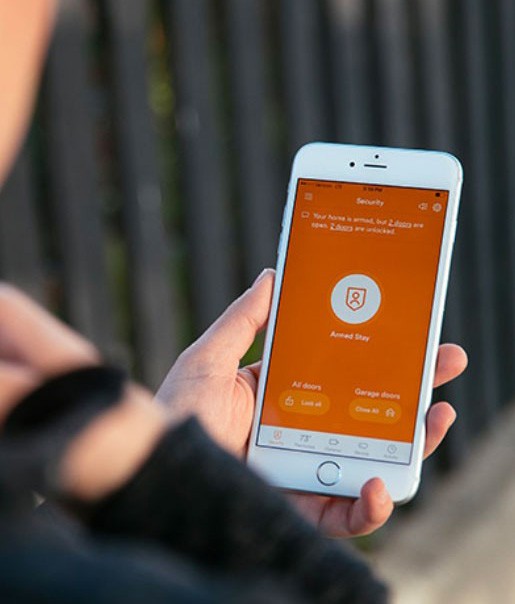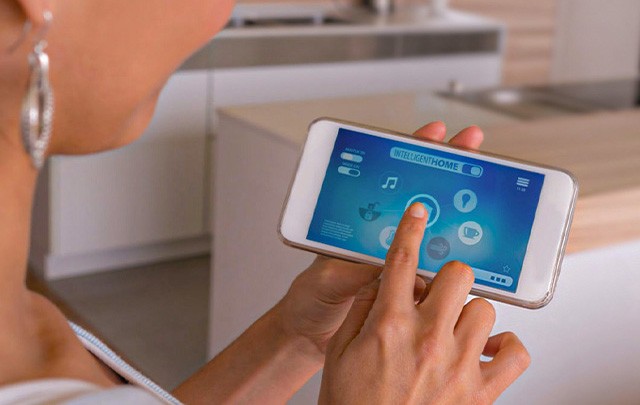Control your Home’s Systems from a Single Location
An automated home lighting system allows you to turn on or off lights remotely—either from another room in the house or from somewhere off site, like the office. In addition to greater convenience, comfort and security, home automated systems provide the added advantage of energy efficiency. If you accidentally leave something on, you can turn it off from as nearby as an adjacent room or from as far away as another country.
More comprehensive and sophisticated home automation systems integrate all household electrical devices—HVAC (heating, ventilation and air conditioning), entertainment, refrigeration, irrigation, security, surveillance and more—enabling their operation and monitoring from a single source, most often a computer or wireless device.
Monitor and manage your home from a single app!
Our preferred partner, Vivint offers professionally installed smart home security. Find peace of mind with a custom-built home security system for your home.
Georgia Power customers will receive*:
- FREE Doorbell Camera Pro or Smart Thermostat
- $0 Activation
Enroll today! Call 1-855-665-0363 or visit www.georgiapower.com/vivint to learn more. Offer ends December 31, 2024 and is subject to change at any time.
*With qualifying system purchase.

Upgrade your home today

Load Shifting & Management
One energy-saving option is peak-load shifting. Many smart appliances are programmable, so that homeowners can take advantage of lower utility rates at times when the demand on the utility is low. More sophisticated home automation systems can communicate with utilities so that appliances such as washers, water heaters, HVAC (heating, ventilation & air conditioning), are automatically deactivated during the peak demand periods.
Lighting & Appliances
Photosensor, occupancy and remote control technologies have a proven track record of energy savings and are also the first energy-saving applications in home automation systems.
Occupancy sensor technologies save the automated home’s owner energy and money by limiting lighting, appliance and space conditioning use when rooms or zones are unoccupied for a certain length of time. Photosensors adjust the lighting in a room to take advantage of daylight. When tied to a home automation system, heating and cooling systems can be adjusted to account for passive solar heat gains. Systems connected to a home automation system can also be turned on by telephone, so the home is comfortable when the owner arrives.


Zoned & Programmable Heating & Cooling
Home automation systems operate as programmable thermostats and regulate household temperatures on a room-by-room and zone basis, instead of the whole house. When hooked up to occupancy sensors, the zones are only activated when occupied. In one high-tech application, people carry sensors that are programmed to their personal preferences. The system reads these when people enter a room and adjusts the environment accordingly.
Types of Controls/Individual Control Devices
There are three types of home automation controls:
- Individual control devices
- Distributed-control systems
- Centrally controlled systems
Individual devices control only one appliance or function. Examples include programmable setback thermostats, motion detectors, occupancy sensors, photocell lighting controls and timers. Individual control device applications range from outdoor lighting to security sensors.

More Helpful Information
Interested in additional energy efficient programs from Georgia Power? We’ve got you covered.
Georgia Power Marketplace
Shop our Marketplace for energy-efficient lighting, thermostats, and more products to help you lower your power bill.